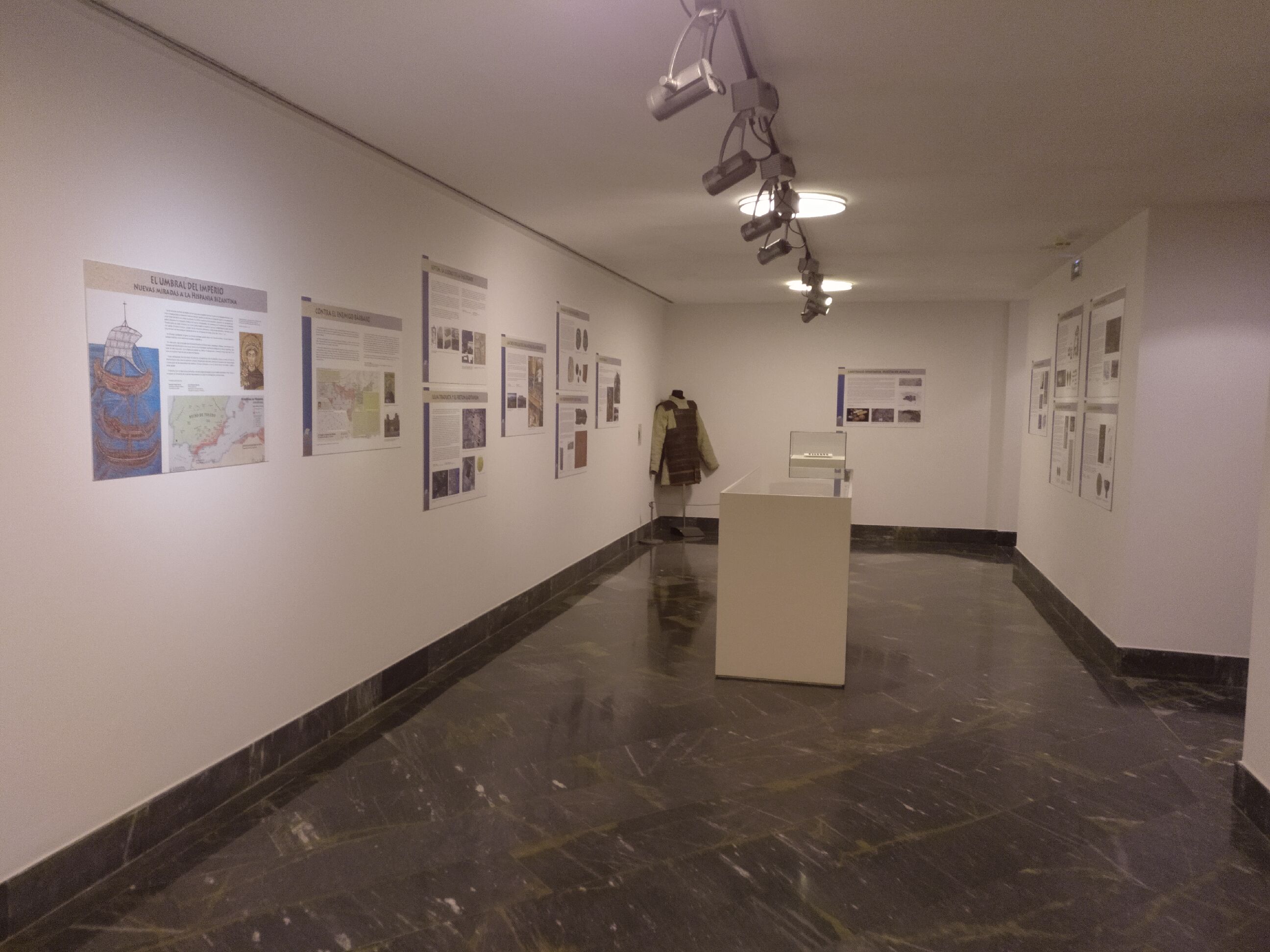Exposiciones temporales
THE THRESHOLD OF THE EMPIRE. NEW LOOKS AT BYZANTINE HISPANIA
- 05/04/2022 - 15/05/2022
- 6.311 Views
The exhibition “The Threshold of the Empire. Nuevas vistas a la Hispania Byzantina”, promoted by the Spanish Society of Byzantinism, focuses through graphic panels on updating and disseminating the latest research on the Byzantine occupation of a part of Hispania.
The Byzantine conquest of North Africa is a first step for the subsequent domination of part of southern Hispania, including Cartagena, with which Justinian managed to take his sovereignty to the very Pillars of Hercules, the threshold of the Empire. However, once such a feat has been achieved, the Eastern sources hardly speak of the Byzantine Spania, and there are not many, nor are they explicit, other textual or epigraphic evidence. For this reason, the Spanish Byzantinistic Society, made up of archaeologists, historians, philologists and art historians attached to more than a dozen Spanish universities, research centers and museums, collaborate in this exhibition, with the aim of contributing their latest research and to shed some more light on the subject.
In essence, it is a transcendental period in the passage from Antiquity to the Middle Ages, in which precisely Carthago Spartaria became the main directional center of the Byzantine Spania . Although few civilizations have been the object of judgments as contradictory as the Byzantine one. If for a sector the Rome of the East reached high levels of cultural splendor and refinement; for others, he embodied the decadence of the ancient world and a good part of the stereotypes of the medieval world. Justinian himself, already in his own time, was loved and hated in equal measure.
The exhibition, curated by Margarita Vallejo. Professor of Ancient History. University of Alcalá and Jaime Vizcaíno. Assistant Professor Doctor of Art History. Complutense University, is a journey with new views on such a complex period.
The graphic panels will be covered with the exhibition of various objects from the Museum found in the Byzantine-era neighborhood built on the Roman theater, such as a lamp with a chrismon or small flasks for transporting the garum, among them the fragments of a lamellar breastplate found in the Roman theater, which have been used by the Clan del Cuervo historical recreation group to reproduce a lamellar breastplate that can be seen in the exhibition, thanks to the collaboration of this recreation group with the exhibition.
This type of cuirass was reserved mainly for some officers and members of the heavy cavalry. In fact, its use required special physical strength to support a weight of more than 20 kg. The poet Flavio Cresconio Coripo says, when narrating the adventures of the Byzantine army in Africa, that this type of soldier went with the “iron-covered torso”.
The exhibition is completed with an audiovisual on the Byzantine presence in Carthago Spartaria, showing the dynamic and cosmopolitan character of the city at this time until its destruction around the year 625 by the troops of the Visigoth king Suintila (Isid., Etym. XV, I, 67-68).
Organize:
Cartagena Roman Theater Museum
Byzantinist Society
University of Alcala
Collaborate:
Clan del Cuervo Historical Reenactment Group
Desperta Ferro
Temporary exhibition, Museum of the Roman Theater of Cartagena
From April 6 to May 15, 2022
Museum of the Roman Theater of Cartagena Plaza
del Ayuntamiento, 9 30201 Cartagena, Murcia (Spain)
Telephone: (+34) 968 504 802
www.teatroromanocartagena.org


